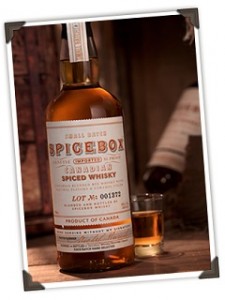 When it comes to whisky, I generally try to stick with Scotch aged 10 years or older. It’s not an issue of snobbery, it’s that my palate isn’t hearty enough to handle whisky that’s only been aged 3 years. There’s also the issue of depth… when you have ten plus years to mature in a barrel, that’s a lot of time for flavors to mature and intermingle. Three years just isn’t enough. And certainly three years in brand new casks, as it what is typically used in stateside whiskies, doesn’t add as much depth as ten years in a formerly bourbon barrel.
When it comes to whisky, I generally try to stick with Scotch aged 10 years or older. It’s not an issue of snobbery, it’s that my palate isn’t hearty enough to handle whisky that’s only been aged 3 years. There’s also the issue of depth… when you have ten plus years to mature in a barrel, that’s a lot of time for flavors to mature and intermingle. Three years just isn’t enough. And certainly three years in brand new casks, as it what is typically used in stateside whiskies, doesn’t add as much depth as ten years in a formerly bourbon barrel.
That said, variety is the spice of life and I recently had a chance to sample a whisky from Canada. A hallmark of most Canadian whiskies is the use of rye grain, though its use is not dictated by law, and Spicebox Canadian Spiced Whisky claims to use great rye in their blend. Spicebox’s whisky is a blend of whiskies aged in bourbon barrels from 3-6 years. In addition to the blend of whiskies, they add in additional flavor with vanilla beans and a “secret blend of spices.”
Why are they named Spicebox? I thought it was because it’s called spiced whiskey. While there are spices in the blend, that’s not the origin of their name. Turns out that during Prohibition, our fine friends to the north would smuggle whiskey in wooden barrels marked “spices” and thus the Spicebox name was born. It’s actually quite enterprising. 🙂
It’s a light amber color with wonderful aromatics, you can definitely smell the vanilla and a general sense of “spices,” though I couldn’t really put my finger on it. If you are a fan of Speysides, this is closer to a Speyside in its sweetness, with vanilla and caramel. It’s smooth for a spirit aged only 3-6 years, I was surprised by that, and I can see this being popular in a mixed drink.

BC Liquor Stores in Canada list it at 25.99 for 750ml and has a general list of spices infused.
“Inspired by the story of a Prohibition-era Canadian bootlegger who sold whisky in wooden barrels stamped with the word “spices,” this small-batch blend of rye whisky is infused with nutmeg, cinnamon, cloves and vanilla. Great for enjoying on the rocks, in cocktails or simply mixed with cola or ginger ale.”
Ginger produces a hot, fragrant kitchen spice.[5] Young ginger rhizomes are juicy and fleshy with a very mild taste. They are often pickled in vinegar or sherry as a snack or just cooked as an ingredient in many dishes. They can also be steeped in boiling water to make ginger tea, to which honey is often added; sliced orange or lemon fruit may also be added. Ginger can also be made into candy, or ginger wine which has been made commercially since 1740.:
Bye for now